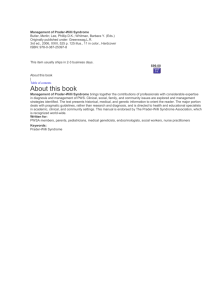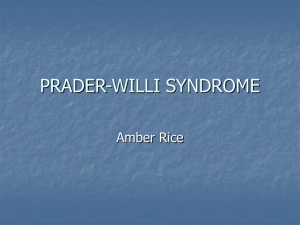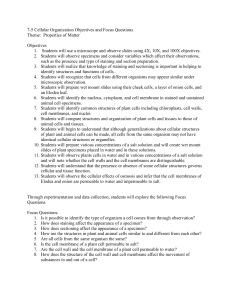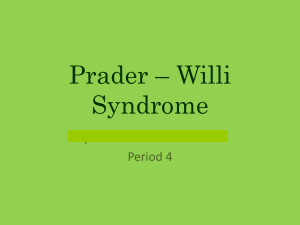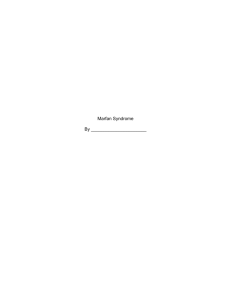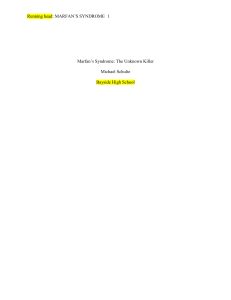Cellular Disease Mini
advertisement
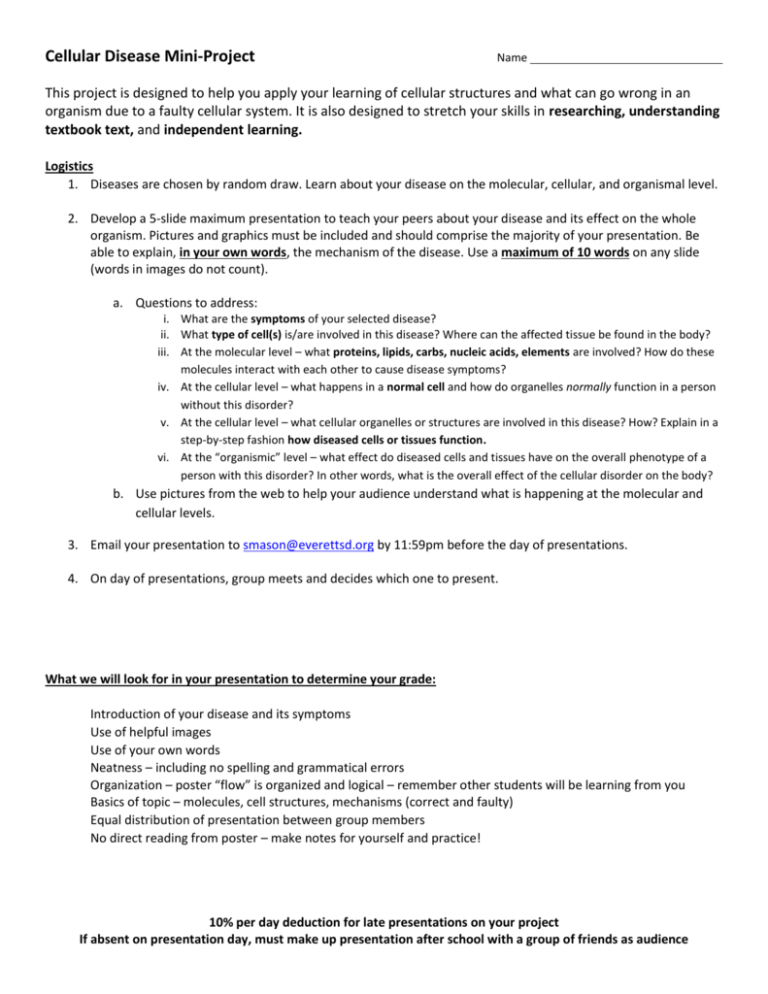
Cellular Disease Mini-Project Name This project is designed to help you apply your learning of cellular structures and what can go wrong in an organism due to a faulty cellular system. It is also designed to stretch your skills in researching, understanding textbook text, and independent learning. Logistics 1. Diseases are chosen by random draw. Learn about your disease on the molecular, cellular, and organismal level. 2. Develop a 5-slide maximum presentation to teach your peers about your disease and its effect on the whole organism. Pictures and graphics must be included and should comprise the majority of your presentation. Be able to explain, in your own words, the mechanism of the disease. Use a maximum of 10 words on any slide (words in images do not count). a. Questions to address: i. What are the symptoms of your selected disease? ii. What type of cell(s) is/are involved in this disease? Where can the affected tissue be found in the body? iii. At the molecular level – what proteins, lipids, carbs, nucleic acids, elements are involved? How do these molecules interact with each other to cause disease symptoms? iv. At the cellular level – what happens in a normal cell and how do organelles normally function in a person without this disorder? v. At the cellular level – what cellular organelles or structures are involved in this disease? How? Explain in a step-by-step fashion how diseased cells or tissues function. vi. At the “organismic” level – what effect do diseased cells and tissues have on the overall phenotype of a person with this disorder? In other words, what is the overall effect of the cellular disorder on the body? b. Use pictures from the web to help your audience understand what is happening at the molecular and cellular levels. 3. Email your presentation to smason@everettsd.org by 11:59pm before the day of presentations. 4. On day of presentations, group meets and decides which one to present. What we will look for in your presentation to determine your grade: Introduction of your disease and its symptoms Use of helpful images Use of your own words Neatness – including no spelling and grammatical errors Organization – poster “flow” is organized and logical – remember other students will be learning from you Basics of topic – molecules, cell structures, mechanisms (correct and faulty) Equal distribution of presentation between group members No direct reading from poster – make notes for yourself and practice! 10% per day deduction for late presentations on your project If absent on presentation day, must make up presentation after school with a group of friends as audience Cellular Diseases Tay Sachs Disease Tay Sachs Disease Prader-Willi Syndrome Prader-Willi Syndrome Cystic Fibrosis Cystic Fibrosis Diabetes Type 1 Diabetes Type 1 Cholera Cholera Marfan Syndrome Marfan Syndrome Kidney Disease Kidney Disease Tay Sachs Disease Tay Sachs Disease Prader-Willi Syndrome Prader-Willi Syndrome Cystic Fibrosis Cystic Fibrosis Diabetes Type 1 Diabetes Type 1 Cholera Cholera Marfan Syndrome Marfan Syndrome Kidney Disease Kidney Disease
